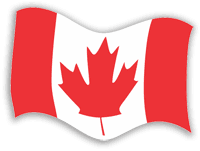|
Canada was once one of
the world’s most active countries in United Nations peacekeeping
operations. In fact, Canadians took pride that their soldiers
did not really fight wars from the late 1950s to the mid-1990s
but instead put on United Nations blue helmets to help warring
nations turn from the battle field to the peace table. The story
began in October of 1956 when Britain and France, allied with
Israel, attacked Egypt.
The British and the French wanted to regain control over the
Suez Canal Zone, which both nations had paid for in the 1880s.
The Canal Zone had been taken over by Egyptian president Gamal
Abdul Nasser several months earlier. He had wanted to prove that
Egypt was a proud and independent country that would no longer
tolerate having an important part of its territory occupied by
European nations and which could run the Suez Canal itself.
Israel attacked Egypt in retaliation for commando raids into
Israel from the Gaza Strip, then occupied by Egypt. Israel
needed British and French support to capture the Sinai
Peninsula.
The United States and the Soviet Union were strongly opposed to
the British/French/Israeli attack. The United States was against
European countries holding colonies in Africa, Asia and other
parts of the world. While the Soviet Union, also opposed to
this, had in addition begun to think of Egypt as a potentially
strong Soviet ally in the Middle East.
Canada too was against the invasion. One of the major reasons
was that Canada depended heavily on the North Atlantic Treaty
Organization (NATO) for its own defence but most importantly for
the defence of western Europe against a possible Soviet attack.
Canada had troops and fighter aircraft in Europe and devoted
most of its navy’s ships to NATO. Ottawa feared that NATO might
split apart since the United States was so opposed to the
actions of Britain and France, and all were NATO members.
Canada’s minister for foreign affairs, Lester B. Pearson, sought
a way to end the fighting, get the British, the French and the
Israelis to withdraw, and patch up NATO.
Pearson proposed that the United Nations create its own military
force, made up of contributions from UN members, to replace the
British and French as they withdrew from the Suez Canal and the
Israelis as they pulled out of Gaza and the Sinai peninsula. The
force was called the United Nations Emergency Force (UNEF) — the
first large United Nations peacekeeping force. Canada
volunteered soldiers to serve in the force, but the Egyptians at
first refused. The Canadian army wore uniforms that looked very
much like British uniforms at that time and the name of the main
Canadian unit to be sent to Egypt (The Queen’s Own Rifles of
Canada) also seemed to show that the Canadians were allies of
the British and therefore not acceptable to the Egyptians. This
problem was quickly overcome when logistical troops were sent
instead.
This first peacekeeping force lasted for 10 years. Until May
1967, UNEF supervised a ceasefire between Egypt and Israel, and
patrolled areas of the Gaza Strip, the Sinai Peninsula and Sharm
El Sheikh at the tip of the Sinai Peninsula. But in May, 1967,
UNEF was withdrawn on orders from Egyptian president Gamal Abdul
Nasser as he sent troops to the Israeli border and threatened
war against Israel. The Six Day War followed from June 5–10,
1967. When the war was over Israel occupied the Gaza strip once
again and the whole of the Sinai. Then UNEF II was created under
UN command to patrol the new ceasefire lines between Israel and
Egypt.
Lester Pearson won the Nobel Peace Prize for his role in the
creation of UNEF, but throughout the Cold War most of Canada’s
soldiers did not do peacekeeping. Instead, they defended North
America alongside the United States and the North Atlantic and
western Europe as part of NATO. But most Canadians knew little
of Canada’s part in the defence of the free world because the
government and the press paid so much attention to Canadian
peacekeeping. Canada participated in UNEF and in almost every
other peacekeeping operation mounted by the United Nations until
the 1990s. So Canada became known world-wide for its
peacekeeping operations. Canadians seemed to forget Canada’s
role in NATO and the massive Canadian efforts in the First and
Second World Wars and in Korea (1950-1953).
In the early 1990s Canada sent troops to help keep the peace
during the civil war that broke out in Yugoslavia when first
Slovenia, then Croatia, and finally Bosnia-Herzegovina all broke
away from Serbia. Much of that civil war was concentrated in
Bosnia-Herzegovina, especially around its capital city of
Sarajevo. Canadian soldiers found themselves shot at by all
sides in the conflict and came to believe that the United
Nations was simply not capable of leading peacekeeping
operations anymore. Today Canada contributes very few soldiers
to UN peacekeeping operations. But the idea that Canada is a
nation of peacekeepers still is widely held by Canadians.
Next Instalment: Canada’s Unique Unified Military
The Canadian Experience is a 52-week
history series designed to tell the story of our country to all
Canadians. Sponsored by Multimedia Nova Corporation and
Diversity Media Services partners, the series features articles
by our country’s foremost historians on a wide range of topics.
Past articles and author bios are available at
http://www.cdnexperience.ca. The Canadian
Experience is copyright ©2010-2011 Multimedia Nova
Corporation.
|
|
 #49 Canada: The Peacekeeping Nation?
#49 Canada: The Peacekeeping Nation?
